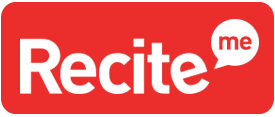The use of restraint is rare and as a hospital we are working to minimise and end its use in our services. We are here to support you and ensure you feel safe and cared for. By working together, we can avoid use of restraint on our wards.
Restraint may be used:
- As a last resort when other options have been tried
- To prevent harm to you, your loved one or someone else
While receiving care on our wards, you will have your own personalised care plan that will explain different ways we'll support you/your loved one without using restraint.
Our staff will create this plan with you, your loved one and anyone else who supports you - for example an independent advocate. If you have questions about your care plan or want to contact an independent advocate, just ask one of our nurses.
How can we support you after a restraint
Your voice and experience matter to us. If you’ve been involved in a restraint, you and your loved ones have the right to:
- Talk about it when you feel ready, in a quiet and safe space of your choice on the ward
- Have someone with you for support during this conversation, like a family member or carer
- Write down your experience of the restraint in your own words and have it added to your electronic hospital records
Seni's Law Poster by Sarah Lloyd.pdf
Seni's Law Publication by Sarah Lloyd.pdf
What types of restraint may be used on our wards?
- Physical Restraint: This means holding a part of your body, like your arms, to stop it moving. Sometimes, you may be seated in a large bean bag called a ‘Safety Pod’ whilst being held.
- Seclusion: This means supporting you in a different space to the other service users on the ward for a short period of time.
- Long Term Segregation: This means supporting you in a different space to the other service users on the ward for a longer period.
- Chemical Restraint: This means giving you medication to keep you calm. If this is given as an injection, it is sometimes called Rapid Tranquillisation.
- Mechanical Restraint: This means using specialised equipment to support with the restraint.
Who can use restraint in our services?
Only nurses and support workers who have completed our Seni Lewis Training Programme can use restraint on our wards.
Your rights in relation to use of restraint on our wards
While you and your loved one are on a ward, you have rights when it comes to restraint. The most essential right is to be treated with respect, dignity and kept safe from harm.
Restraint should never be used:
- Without considering alternative methods first
- As punishment
- More than necessary
- For longer than necessary
- To cause physical harm
- To humiliate you
- To make you feel discriminated against
- To leave you feeling unheard or abused
Any restraint used must, by law, be recorded and monitored to protect your rights and well-being.
Raising concerns about your care and treatment
If you feel that restraint has been used inappropriately by staff or want to raise concerns, you or your loved one can speak to a member of ward staff. This is usually the quickest and easiest option.
You and your loved one can also contact:
Patient Advice and Liaison Service:
Email: PALS@slam.nhs.uk
Freephone: 0800 731 2864
If you wish to make a formal complaint, you or your loved one can email: complaints@slam.nhs.uk
Any concerns or complaints you/your loved one raise will be fully investigated by us using the Trust investigation procedure.
Glossary: Terms Related to the Use of Restraint
Seni Lewis Training Programme: A staff training programme ‘Trauma informed care – an approach to health and care interventions’ which is grounded in the understanding of the impact of traumatic experiences on the individual.
IM medication – Intramuscular injection: Might be used when oral medication is refused, and the service user is under a section of the Mental Health Act.
PRN (Pro re nata) medication: Medication occasionally administered when a service user is experiencing high agitation.
De-escalation: Techniques used to calm situations.


